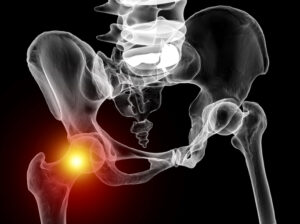Hip fractures are common in older adults, and mortality from hip fractures is approximately 3-5% in the hospital and increases to 40% at one year. In addition, 50% of these patients have pre-existing anemia which is often caused by iron deficiency. Both intravenous iron and tranexamic acid are often both recommended for planned surgeries, but little data exists for urgent surgeries such as hip fractures. Data from the Hip Fracture Iron and Tranexamic acid (HiFIT) trial suggests that a high dose of intravenous iron plus tranexamic acid reduces RBC transfusions by 50% in patients with hip fractures (with pre-transfusion hemoglobin values 9.5 to 13.0 g/dL). In the study, 413 participants (median age, 86 years; 76% female) were randomized 1:1:1:1; 104 participants received ferric derisomaltose and tranexamic acid, 103 received iron plus placebo, 103 received tranexamic acid plus placebo, and 103 received double placebo. Overall, 25% of participants (n=102) received RBC transfusions. However, 30% of participants (n=31) who received double placebo received transfusions compared to 15% of participants (n=16) who received iron plus tranexamic acid (relative risk, 0.51; 98.3% CI, 0.27 to 0.97; p=0.012). Furthermore, 26% and 27% of participants who received either iron plus placebo or tranexamic acid plus placebo, respectively, received transfusions. Further studies are needed to optimize treatments for patients with hip fractures.
Reference:

